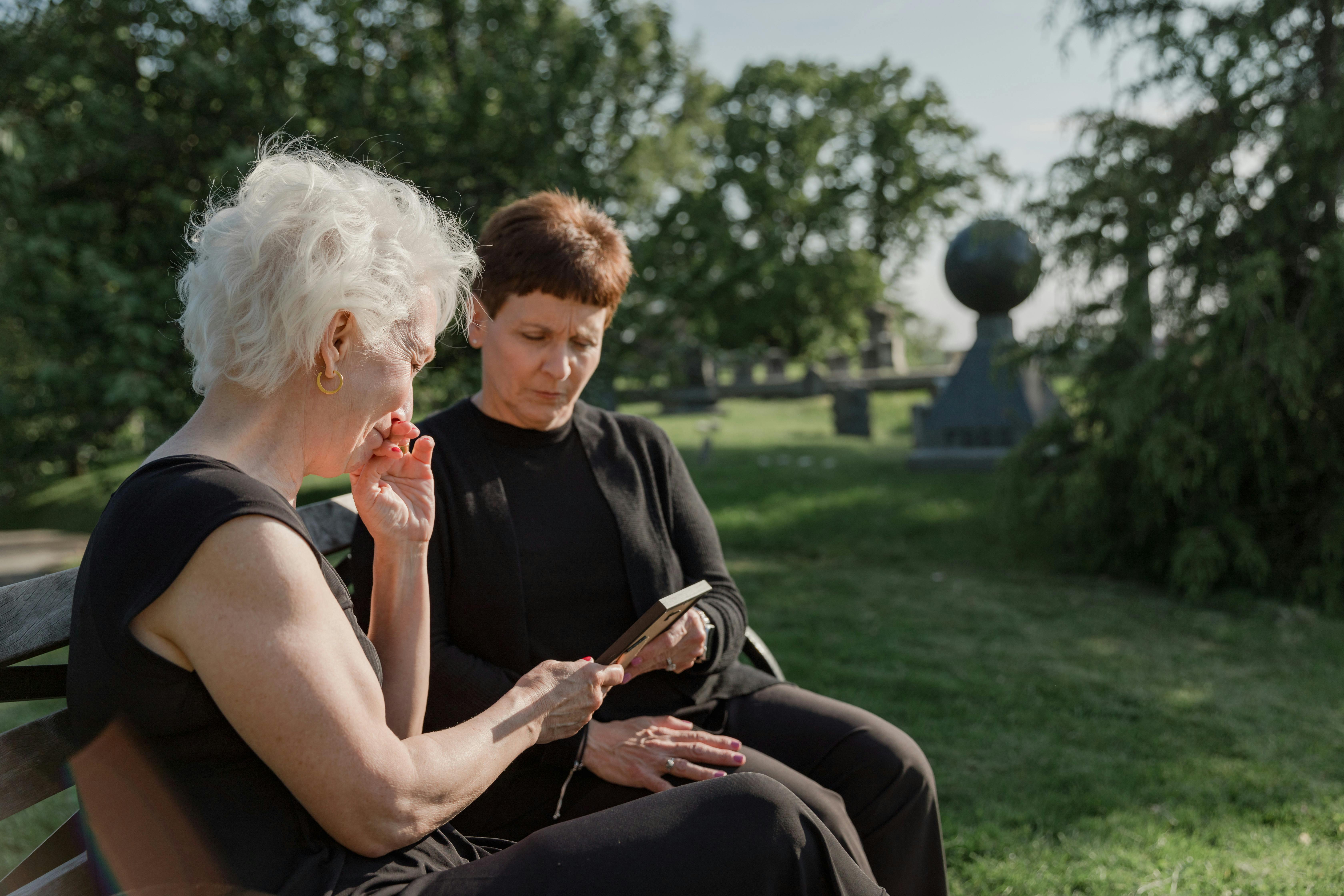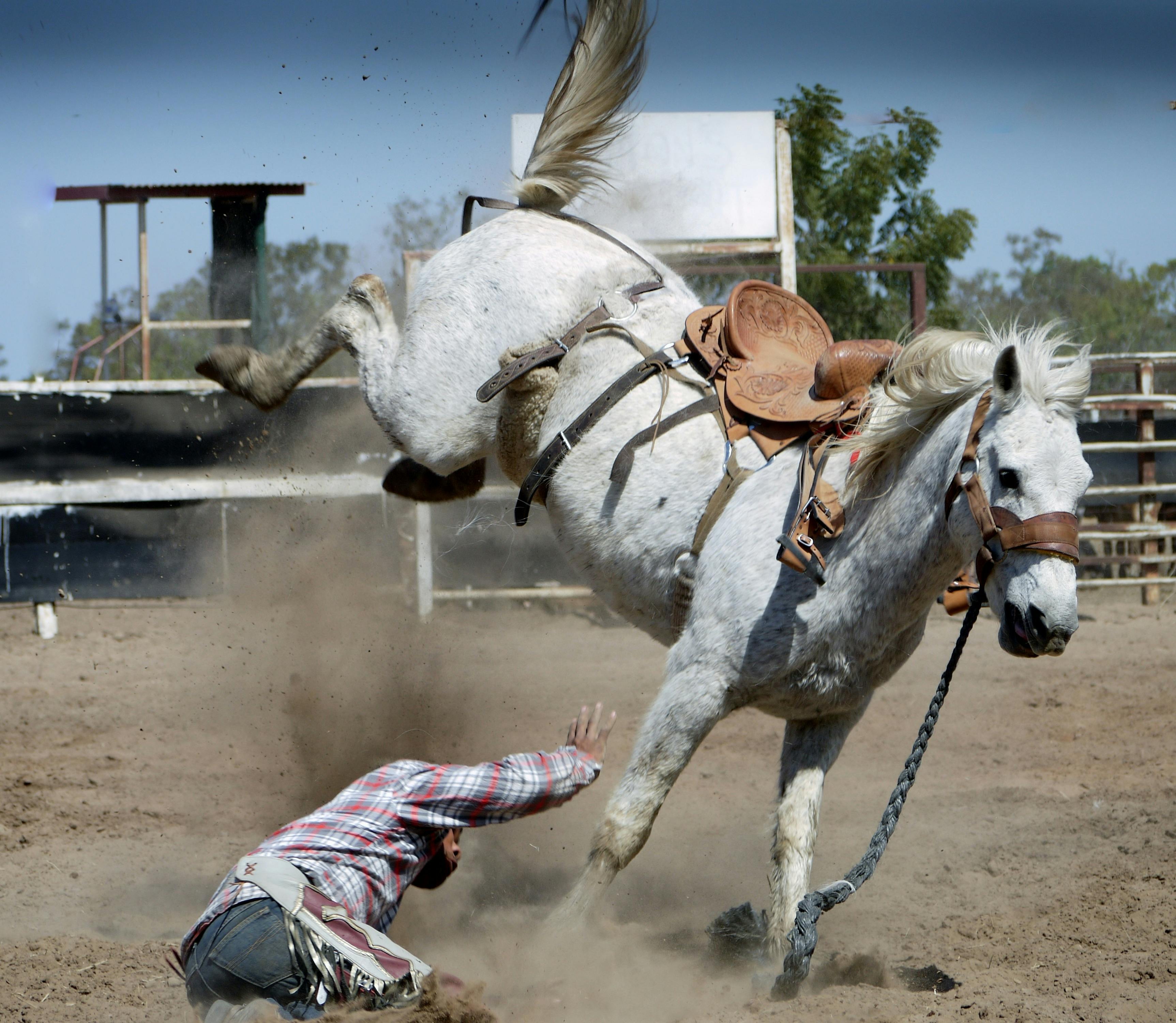Signs That Might Save a Life From Stroke
Strokes are often perceived as sudden and dramatic events, but the reality is that they usually come with warning signs that, if recognized early, can save lives. Strokes occur when the blood supply to part of the brain is interrupted or reduced, preventing brain tissue from getting oxygen and nutrients. Within minutes, brain cells begin to die. That's why we've expanded our list of crucial signs that can help recognize a stroke before it causes irreversible damage. Understanding these signs is not just beneficial but essential, as timely intervention can significantly improve outcomes, reduce disability, and save lives.
1. The Sudden Onset of Numbness or Weakness

One of the most common and noticeable signs of a stroke is the sudden onset of numbness or weakness, particularly on one side of the body. This can affect the face, arm, or leg and may be accompanied by a feeling of heaviness or an inability to move the affected limb. Recognizing this symptom is critical because it indicates that the part of the brain controlling those muscles is not receiving enough blood. This sign is often abrupt, making it easy to dismiss as temporary or related to fatigue. However, any unexplained weakness or numbness should be treated as an emergency. Immediate medical attention can prevent further brain damage and improve recovery chances.
2. Confusion and Trouble Speaking

Another key indicator of a stroke is sudden confusion or trouble speaking. This can manifest as slurred speech, difficulty finding the right words, or an inability to understand spoken language. These symptoms occur because a stroke can affect the brain's language centers, disrupting communication pathways. It's essential to note that this confusion is not related to tiredness or stress but is a sudden and noticeable change. If someone experiences these symptoms, it's crucial to seek medical help immediately. Quick action can minimize brain damage and improve the effectiveness of treatments like clot-busting drugs, which are time-sensitive.
3. Vision Problems in One or Both Eyes

Vision problems, such as sudden blurred vision, double vision, or complete loss of vision in one or both eyes, can be a warning sign of a stroke. These issues occur when the part of the brain responsible for processing visual information is affected. Often, these visual disturbances are mistaken for eye problems or dismissed as fleeting issues. However, they should be taken seriously, especially if they appear suddenly. Recognizing vision problems as potential stroke symptoms can prompt faster medical intervention, which is crucial for preserving eyesight and preventing further neurological damage.
4. Dizziness and Loss of Balance

Experiencing sudden dizziness, loss of balance, or coordination can be a subtle yet significant indicator of a stroke. These symptoms are often accompanied by difficulty walking or a sensation of vertigo. They occur when a stroke affects the areas of the brain responsible for maintaining balance and coordination. While dizziness can be attributed to various benign causes, its sudden onset in conjunction with other symptoms should raise alarm. Prompt recognition and medical evaluation are essential, as they can prevent falls and additional injuries, while also ensuring that the underlying stroke is treated swiftly.
5. Severe Headache with No Known Cause

A severe headache that appears suddenly and without a known cause can be a sign of a stroke, particularly a hemorrhagic stroke, which involves bleeding in the brain. This type of headache is often described as the worst headache of one's life and may be accompanied by nausea or vomiting. Unlike typical headaches, this pain is intense, abrupt, and can be debilitating. Recognizing this symptom as a potential stroke warning is vital, as it requires immediate medical intervention to prevent further bleeding and brain damage. Early detection and treatment can significantly improve outcomes and reduce the risk of long-term complications.
6. Facial Drooping: The Asymmetrical Clue

Facial drooping, a sudden and noticeable asymmetry of the face, is one of the most crucial signs of a stroke. This occurs when the nerve signals to the facial muscles are interrupted, causing one side of the face to droop. You may notice a crooked smile, a difficulty closing one eye, or the face feeling numb or slack. This is a core component of the "FAST" acronym used to quickly identify a stroke. When you see this sign, it’s a clear indication that a part of the brain is affected and requires immediate medical attention.
7. Sudden Nausea or Vomiting

While the article mentions a severe headache, a stroke can also present with sudden, unexplained nausea or vomiting on its own. These symptoms can be particularly confusing because they are often associated with less severe conditions like the flu or food poisoning. However, if nausea or vomiting appears suddenly and without any clear cause, it could be a sign that a stroke is affecting the brain's balance and digestive centers. Do not ignore this symptom, especially if it is accompanied by any other stroke-related signs.
8. Sudden Hiccups: A Surprising Stroke Symptom

This is one of the most surprising and often dismissed symptoms of a stroke, especially for women. Recent research has shown that persistent hiccups, especially when combined with other subtle stroke symptoms, can be an indicator of a stroke. While occasional hiccups are normal, a sudden, strong, and persistent case of hiccups that lasts for more than a few minutes should not be ignored. This is a subtle and often overlooked signal from the brain, and recognizing it could lead to faster medical intervention.
9. Difficulty Swallowing (Dysphagia)

A stroke can affect the brain's ability to control the muscles needed for swallowing, a condition known as dysphagia. This can manifest as a feeling of a lump in the throat, difficulty moving food or liquid down, or coughing and choking when trying to eat or drink. While often associated with other medical conditions, a sudden onset of dysphagia is a critical and serious symptom of a stroke. This is a direct sign that the brain's motor control is impaired and requires immediate medical attention.
10. Sudden Behavioral Changes

Beyond confusion, a stroke can cause a sudden and dramatic change in a person's behavior. This can range from an unexpected onset of agitation or aggression to a sudden shift in personality or a complete lack of awareness of their surroundings. These symptoms can be particularly frightening for family members and bystanders, as they can be difficult to interpret. These are direct signs that the brain's emotional and cognitive centers are under distress and require immediate medical evaluation.
11. The Onset of Vertigo: A Spinning Sensation

While "dizziness" is a good general term, vertigo is a more specific and alarming symptom. It's not just feeling lightheaded; it's a sudden, strong sensation that you or your surroundings are spinning or moving, even when you're standing still. This type of severe vertigo can be a key sign of a stroke in the cerebellum, the part of the brain that controls balance and coordination. Often, this is accompanied by a sudden inability to stand or walk, as if you've been pushed off balance. If you or someone you know experiences this without a clear cause, such as inner ear issues, seek immediate medical attention.
12. Sudden Fatigue or Drowsiness

While many people feel tired, a sudden, overwhelming fatigue or drowsiness that appears without warning can be a sign of a stroke. This is not simply feeling sleepy; it’s an abrupt lack of energy and an overwhelming desire to lie down or lose consciousness. This symptom can be particularly concerning when it occurs in conjunction with other subtle signs like a headache or slight numbness. It's often overlooked because it's so common, but when it appears suddenly and out of character, it can be a critical warning from your brain that something is very wrong.
13. Acute Aphasia: The Inability to Find Words

Beyond just slurred speech, a stroke can cause acute aphasia, a more specific and unsettling language problem. This is the inability to find or recall words, or to form coherent sentences, even though the person knows what they want to say. The person may speak in jumbled phrases or invent new words that make no sense. This is a direct sign that the language centers of the brain (often in the left hemisphere) are being starved of oxygen. While it can be confused with confusion, aphasia is a distinct and serious neurological symptom that demands urgent attention.
14. Sudden, Unexplained Arm-Swinging Problems

When a person walks, their arms naturally swing in a coordinated rhythm. A sudden stroke can disrupt this gait, causing one arm to no longer swing naturally. This unexplained arm-swinging problem is a subtle but telling sign of a neurological issue affecting the part of the brain responsible for motor control. It may look like the person is just "holding their arm funny," but it can be an early indicator of weakness or loss of muscle control. This sign is easy to spot by a companion and is a crucial, non-verbal clue that a stroke is occurring.
15. Sudden Memory Loss: A Moment of Unexplained Amnesia

While often associated with age, a sudden and profound memory loss that appears out of nowhere can be a stroke symptom. This isn't forgetting where you put your keys; it's a complete inability to recall recent events, recognize familiar faces, or understand where you are. This can be especially true for strokes that occur in the posterior cerebral artery, affecting areas related to memory. When a person suddenly has an unexplained gap in their memory or seems disoriented without a clear cause, it's a serious neurological red flag that should prompt an immediate call to emergency services.
16. Sudden and Severe Jaw Pain

While chest and arm pain are well-known heart attack signs, a sudden, inexplicable jaw pain can also be a surprising stroke symptom. This discomfort can feel like a tight ache or a burning sensation, typically on one side of the jaw. This is especially true for women, who may present with less-common stroke symptoms. The pain occurs because the same nerve pathways that connect to the face can be affected by the stroke. Unlike dental pain, this sensation is not related to chewing or a specific tooth, and it's accompanied by other neurological signs.
17. A Sudden, Severe Sensation of Light Sensitivity

Strokes can affect the brain's visual processing centers, leading to unusual and severe symptoms beyond simple vision loss. A sudden and intense light sensitivity, also known as photophobia, can be a sign. This is not the mild discomfort you feel on a sunny day; it's an acute, painful reaction to even low levels of light, often accompanied by a headache. This symptom is a direct signal that the brain's occipital lobe, which is responsible for vision, is under duress.
18. Sudden Inability to Swallow a Pill

An alarming sign to watch out for is the sudden inability to swallow something you normally can, like a daily vitamin or a small pill. This is an abrupt sign of a severe neurological impairment affecting the throat muscles. The brain's complex swallowing mechanism requires precise timing and coordination, and a stroke can disrupt this process. If you can swallow food and liquid but suddenly find that you can't get a pill down, it's a clear signal that something is wrong.
19. Sudden and Unexplained Tingling on One Side

A stroke can also manifest as a sudden, intense tingling sensation or a "pins and needles" feeling. This is called paresthesia. Unlike a limb falling asleep from a lack of blood flow, this tingling can occur without any reason, such as sitting in a strange position. It's a sign of nerve damage or irritation caused by a lack of oxygen to a part of the brain. If you feel a sudden, tingling sensation on one side of your body with no apparent cause, it should be considered a potential stroke symptom.
20. Abrupt and Uncharacteristic Forgetfulness

This is not about forgetting where you put your keys but suddenly forgetting how to use them. It could be a sudden inability to perform a task you do every day, like brushing your teeth or tying your shoes. This is an indication that a stroke has affected a specific area of the brain related to motor memory and learned skills. When a loved one suddenly struggles with a routine task, it's a sign of a neurological problem that warrants immediate attention.
21. Sudden Numbness or Weakness in the Tongue

A stroke can present with a very specific form of numbness or weakness that is often overlooked. If you suddenly feel that one side of your tongue is numb, or you have trouble moving it, it could be a sign of a stroke. This occurs because the cranial nerves that control the tongue’s movement and sensation are affected by a lack of blood flow to the brainstem. This can make speaking, swallowing, or even tasting difficult. While it might seem minor, this very specific, unilateral symptom is a strong indicator of a neurological event and should be considered a medical emergency.
22. The Sudden Inability to Read or Write

A person suffering a stroke might suddenly lose the ability to read or write, a condition known as alexia and agraphia, respectively. This is not about being illiterate; it is a profound and abrupt loss of the brain’s ability to process and comprehend written language. You might hand someone a book, and they stare at the words as if they are a foreign language, or they may try to write their name and find they can't form the letters. This is a direct sign that the parts of the brain responsible for language and visual processing have been impacted, and it requires immediate medical intervention.
23. Acute Loss of Bladder Control

A sudden and unexplained loss of bladder or bowel control can be a surprising and embarrassing symptom of a stroke. The brain's ability to control these functions is complex, and a stroke can disrupt the neural pathways that signal to the bladder and sphincter muscles. This is not a gradual process or a symptom of an existing condition; it is a sudden and acute loss of control. When this symptom appears without any other known cause, it is a critical sign of a neurological emergency and requires immediate medical attention.
24. Sudden Inability to See One Side of Your Visual Field

A stroke can cause a condition called hemianopia, which is the loss of vision in one half of the visual field. This is different from the blurred or double vision mentioned earlier. For example, a person may be able to see everything on their right side but nothing on their left. They might bump into objects or fail to see a person approaching from one direction. This symptom is often subtle and can be overlooked by the person experiencing it, as their brain may try to fill in the missing information. This is a profound and serious sign that a stroke has affected the visual cortex and warrants an immediate call for help.
25. Unexplained Difficulty in Using a Key

A very subtle but telling sign of a stroke is the sudden inability to perform a simple, learned task like using a key. The brain's motor cortex is a precise control center, and a stroke can cause a loss of the fine motor skills required to put a key in a lock, turn a doorknob, or button a shirt. The person may try to perform the task but their hand just won't cooperate. This is a distinct symptom that is not caused by muscle weakness but by a disruption in the brain's ability to send the correct signals to the hand, and it's a clear indication that a stroke is occurring.
26. Sudden Onset of Auditory Issues

While strokes are most often associated with visual symptoms, they can also suddenly affect hearing. A person experiencing a stroke may have a sudden loss of hearing in one or both ears, or a persistent ringing sensation known as tinnitus. These auditory symptoms can occur because the brain's auditory centers or the neural pathways that transmit sound information are being deprived of oxygen. Since these issues are often attributed to age or other minor conditions, they are easily dismissed. However, a sudden, unexplained change in hearing is a critical warning sign that should never be ignored.
27. Sudden Inability to Tell Temperature

A very subtle but telling sign of a stroke is a sudden loss of the ability to feel temperature on one side of the body. This is a specific sensory deficit where the person can still feel touch, but they cannot tell if something is hot or cold. For instance, holding a mug of hot coffee might feel like holding something room temperature. This symptom, often ignored as a strange sensation, is a clear signal that the brain's parietal lobe—the area responsible for processing sensory information—is under duress and requires immediate medical attention.
28. Sudden, Unexplained Shortness of Breath

A stroke can present with a very confusing symptom: sudden and severe shortness of breath. While this is commonly associated with a heart attack or lung problems, it can also be a sign of a stroke, especially one that affects the brainstem. The brainstem controls vital functions like breathing, and a disruption in its blood supply can lead to an abrupt feeling of air hunger or an inability to take a full breath. This symptom is a direct sign that a critical area of the brain has been affected, and it warrants an immediate call for help.
29. Sudden Changes to One's Voice

A stroke can cause a sudden and uncharacteristic change in a person’s voice. This is not slurred speech, but rather a change in pitch, tone, or quality, such as a sudden hoarseness or a raspy quality. The muscles of the larynx and vocal cords are controlled by cranial nerves that originate in the brainstem, and a stroke can cause a disruption in these signals. When a person's voice suddenly sounds different without a clear cause like a cold or allergies, it can be a subtle but critical indicator of a neurological emergency.
30. Sudden Clumsiness with Fine Motor Skills

While the list mentions difficulty with specific tasks like using a key, a more general sign of a stroke is a sudden onset of clumsiness. This can manifest as an inability to perform routine fine motor skills, like buttoning a shirt, tying shoelaces, or even writing. The person's hand might feel uncoordinated, or they might struggle to perform a task they've done thousands of times. This is a direct sign that the brain's motor cortex, which controls precise movements, has been affected and requires immediate medical attention.
31. Sudden Change in Pupils

The pupils of your eyes are a window into your brain, and a sudden change in their appearance can be a subtle but critical sign of a stroke. A stroke can disrupt the nerve pathways that control pupil size, leading to anisocoria, a condition where one pupil becomes noticeably larger or smaller than the other. This visual sign is often overlooked because it's painless and doesn't affect vision immediately. If you notice a sudden difference in pupil size, it could be a sign that a stroke is affecting the brainstem, and it warrants an immediate call for medical help.
30. Sudden Change in Sense of Smell or Taste

A stroke can present with a very confusing symptom: a sudden change in your sense of smell or taste. The brain is responsible for processing these senses, and a disruption in blood flow to these areas can cause a sudden loss or alteration of these abilities. For example, a person might suddenly find that their favorite food tastes like nothing at all, or that a familiar scent, like coffee, has a strange or unpleasant odor. This is a direct sign that the parts of the brain responsible for these senses have been affected, and it's a critical neurological symptom that requires immediate attention.
31. The Inability to Recognize Familiar Objects

A stroke can cause a profound and unsettling cognitive symptom called agnosia, where a person suddenly loses the ability to recognize familiar objects. This is different from memory loss; the person can see the object and describe it, but their brain can't connect the visual information to its identity. For example, they might look at a shoe and describe its color and shape, but they won't know what it is. This is a clear indication that a stroke has affected the brain's visual processing centers, and it is a serious neurological symptom that demands urgent attention.
32. Sudden Onset of Eye Pain

While the list mentions vision problems, a stroke can also cause a sudden, sharp, and unexplained pain in one eye. This is not the mild discomfort of eye strain or a headache, but a piercing, stabbing sensation that can be debilitating. This symptom can occur because a stroke is affecting the nerves that control the eye's movement and sensation. The pain can be a critical warning from your body that a stroke is occurring, and it's a specific, localized symptom that should be taken seriously, especially when accompanied by other stroke-related signs.
33. The Inability to Feel an Object's Texture or Weight

A stroke can cause a very subtle sensory deficit where a person can hold an object but lose the ability to feel its weight, shape, or texture. This is a distinct symptom from simple numbness. For instance, a person might hold a tennis ball but feel that their hand is empty, or they might not be able to tell if it's rough or smooth. This symptom is a direct sign that the brain's sensory cortex, which processes touch, is under duress, and it is a critical neurological warning that requires immediate medical attention.
34. The Sudden, Unexplained Feeling of Being Pushed Sideways

This is a specific and unsettling symptom that goes beyond general dizziness. A stroke in the cerebellum, the part of the brain responsible for coordination and balance, can cause a sudden, profound sensation that you are being pushed or pulled to one side, even when standing still. This isn't a feeling of vertigo where the room is spinning, but a distinct sense of being destabilized. You might stumble or find yourself leaning to one side involuntarily. This symptom is a direct sign that the brain's sense of spatial awareness is compromised, and it should be treated as a neurological emergency.
35. Abrupt Difficulty in Performing a Learned Skill (Apraxia)

Beyond general clumsiness, a stroke can cause a very specific and alarming symptom known as apraxia. This is a sudden, unexplained inability to perform a learned, purposeful movement, even though the person has the desire and physical ability to do so. For example, a person might suddenly forget how to use a fork, brush their teeth, or even snap their fingers. This isn't a matter of forgetting what the object is, but rather how to perform the action. This direct disruption of the brain's motor memory is a clear red flag that a stroke has occurred.
36. The Sudden Feeling of Lightness in an Arm or Leg

While numbness and heaviness are common stroke symptoms, a sudden feeling of lightness or disembodiment in a limb can also be a sign. This is a sensory disturbance where the person feels as though their arm or leg is not part of their body, or that it feels unusually light, even weightless. This can make it difficult to perform a simple task like walking, as the person may not be able to feel their foot making contact with the ground. This specific and unusual sensation is a direct signal that the brain's sensory cortex has been affected.
37. Sudden, Uncharacteristic Agitation or Rage

A stroke can affect the parts of the brain that regulate emotions, leading to a sudden and dramatic shift in personality or temperament. A calm person might become unexpectedly agitated, aggressive, or even hostile without any clear cause. This isn't simply a bad mood; it’s an abrupt and profound behavioral change that is completely out of character. This symptom is particularly frightening for loved ones as it can be confused with other mental health issues, but when it appears suddenly, it is a critical sign of a neurological emergency.
38. The Sudden, Persistent Hiccups and Nausea (Especially in Women)

This specific combination of symptoms is a notable, albeit less common, sign of a stroke, particularly in women. While a single bout of hiccups is harmless, a sudden onset of persistent hiccups that lasts for several minutes or more, especially when coupled with unexplained nausea, should raise an alarm. These symptoms occur when a stroke affects the brainstem—the area that controls involuntary functions like hiccups and digestion. Because this combination is often mistaken for simple indigestion, it's a frequently missed clue. Knowing this subtle sign could be a critical step toward a timely diagnosis.
39. Unexplained, Sudden Shortness of Breath

While shortness of breath is most commonly associated with a heart attack or lung issues, it can also be a surprising but critical sign of a stroke, especially one affecting the brainstem. The brainstem is the control center for vital functions, including breathing. When its blood supply is interrupted, it can lead to an abrupt and severe feeling of "air hunger" or a sudden inability to take a deep, satisfying breath. This isn't a symptom of exertion; it's a profound feeling of not getting enough air, even when you're at rest. Because it's so often mistaken for a cardiac or respiratory issue, this symptom can be a crucial, often-missed red flag.
40. Sudden Inability to Multi-Task (Executive Dysfunction)

A stroke can affect the brain's frontal lobe, which is responsible for executive functions like multi-tasking and planning. You might notice a person who is usually very organized suddenly becoming overwhelmed by a simple task, like making a cup of coffee. They may forget a step in the process or become agitated and unable to complete it. This isn't just confusion; it's a specific loss of the brain's ability to sequence actions and process multiple pieces of information at once. This is a profound and serious sign that a stroke has affected a critical cognitive center.
41. Unexplained Hemi-Neglect

Hemi-neglect is a bizarre and often-missed stroke symptom where a person loses awareness of one side of their body and the space around it. For instance, they might only eat food on the right side of their plate, shave only half of their face, or fail to notice a person standing on their left. This isn't a vision problem; their eyes are working, but their brain simply ignores the information coming from one side. This is a direct sign of a stroke in the brain's parietal lobe, and it's a critical neurological red flag that requires immediate attention.
42. Sudden Onset of Uncharacteristic Apathy

A stroke can cause a sudden and profound change in a person’s emotional state, leading to apathy. This is a dramatic loss of motivation, interest, and emotional response. For example, a person who is normally vibrant and engaged might suddenly become completely indifferent to their hobbies, loved ones, or daily life. This isn’t a sign of depression or fatigue but an abrupt, flat emotional state that is out of character. This symptom is a clear signal that the brain’s frontal lobe, which governs personality and emotion, has been affected and requires immediate medical attention.
43. Sudden Onset of Dysesthesia: Unexplained Pain or Burning

While numbness and tingling are recognized signs, a less common but significant symptom is dysesthesia. This isn't just a tingling sensation; it's a sudden, unexplained feeling of pain, burning, or a strange electric shock sensation that can occur on one side of the body. This is a direct result of the stroke disrupting the nerve pathways that transmit sensory information to the brain's thalamus. Unlike pain from an injury, this sensation appears without a clear external cause and can be deeply unsettling. Recognizing this unique symptom as a potential neurological event is critical for timely medical intervention.
44. Sudden, Uncontrollable Yawning

An often-overlooked and very subtle sign of a stroke, especially a mini-stroke or TIA, is a sudden bout of excessive, uncontrollable yawning. While yawning is typically associated with fatigue or boredom, a sudden, persistent stream of yawns, without feeling sleepy, can be a sign that the brainstem is being deprived of oxygen. The brainstem regulates many involuntary functions, including respiration and wakefulness. This symptom is a quiet warning sign that the body is trying to compensate for a lack of oxygen in a critical area of the brain, and it should not be dismissed.
45. Abrupt "Out-of-Body" Sensation

A stroke can cause a profound and terrifying sensory disturbance where a person feels a sudden disconnection from their own body. This isn't a feeling of lightness, but a distinct sense that their body isn't their own, or that they are observing themselves from outside. This bizarre phenomenon, known as somatoparaphrenia, is a rare but serious symptom of a stroke affecting the parietal lobe, the part of the brain responsible for spatial awareness and body image. This sudden and profound feeling of disembodiment is a clear neurological red flag that requires immediate attention.
46. Sudden, Unexplained Emotional Lability

Beyond general behavioral changes, a stroke can cause a very specific symptom known as emotional lability. This is a sudden, unexplained, and extreme shift in emotional expression, such as bursting into tears or uncontrollable laughter that is not in line with the situation. For example, a person may start crying while watching a neutral commercial or laugh uncontrollably during a serious conversation. This is not a personality change, but a direct result of a stroke disrupting the brain's limbic system, which controls emotional regulation. This symptom can be particularly confusing for loved ones, but it is a critical sign of a neurological emergency.
47. Sudden Onset of Uncharacteristic Apathy

A stroke can cause a sudden and profound change in a person’s emotional state, leading to apathy. This is a dramatic loss of motivation, interest, and emotional response. For example, a person who is normally vibrant and engaged might suddenly become completely indifferent to their hobbies, loved ones, or daily life. This isn’t a sign of depression or fatigue but an abrupt, flat emotional state that is out of character. This symptom is a clear signal that the brain’s frontal lobe, which governs personality and emotion, has been affected and requires immediate medical attention.
48. Unexplained Loss of Sensation in the Hand or Foot

While numbness on one side of the body is a well-known sign, a stroke can also manifest as a sudden, isolated loss of sensation in just one hand or foot. This can be a very subtle symptom, often dismissed as a limb "falling asleep." However, if your hand or foot suddenly feels completely numb without any obvious cause, it can be a critical sign that a stroke is affecting the brain's sensory cortex. This specific and unilateral symptom is a direct red flag that requires immediate medical attention, even if no other stroke signs are present.
49. Sudden, Unexplained Facial or Limb Twitching

A stroke doesn't always cause paralysis or drooping; it can also cause the opposite effect: a sudden, uncontrolled twitching or jerking of the face, arm, or leg. This is not a grand mal seizure, but rather a subtle, persistent muscle spasm that is out of the person’s control. It’s a direct sign that the stroke is irritating the brain's motor cortex, the area that controls muscle movement. If you notice an uncharacteristic twitching on one side of someone’s body that doesn't go away, it's a critical neurological warning.
50. Sudden Inability to Identify an Object by Touch (Astereognosis)

This is a profound and unsettling symptom. A stroke can suddenly cause a person to lose the ability to recognize an object just by holding it in their hand. For example, if you place a key in their hand and ask them what it is, they may be able to describe its shape and weight, but their brain can't connect that sensory information to the concept of a key. This is a clear sign that a stroke has affected the brain's parietal lobe, the region responsible for processing complex sensory information, and it should be treated as a medical emergency.
51. The Feeling of a "Heavy Head" or Lightheadedness

Beyond general dizziness, a stroke can cause a very specific and unusual sensation of having an incredibly "heavy head" that is difficult to hold upright. This feeling is not related to a headache or fatigue but is a direct result of a stroke affecting the brain's vestibular system, which controls balance and spatial orientation. This symptom can be accompanied by a feeling of lightheadedness or a sudden urge to lie down. If this feeling appears abruptly and without a clear cause, it’s a critical sign of a neurological event.
52. Unexplained, Sudden Hoarseness

While hoarseness is often a sign of a cold, a stroke can cause a sudden and persistent change in a person’s voice without any other symptoms of illness. The brainstem controls the cranial nerves that are essential for vocal cord function. A stroke can interrupt these signals, leading to a sudden, raspy, or breathy quality to the voice. This is not just slurred speech; it’s a direct, uncharacteristic change in vocal quality. If this symptom appears suddenly and with no other explanation, it’s a crucial sign of a potential brainstem stroke.
53. Sudden Inability to Recognize Faces (Prosopagnosia)

A stroke can cause a profound and unsettling cognitive symptom known as prosopagnosia, or face blindness. This is the sudden inability to recognize familiar faces, even those of close family and friends. While the person can still see the facial features, their brain can't connect the visual information to the person's identity. This is a distinct and serious neurological event that is different from simple memory loss. It is a clear sign that a stroke has affected the part of the brain responsible for facial recognition and requires immediate medical attention.
54. The "Thunderclap" Headache

A severe headache is on the list, but a specific type known as a "thunderclap" headache is a critical warning sign for a hemorrhagic stroke. It's a sudden, excruciating headache that reaches its maximum intensity within 60 seconds. Patients often describe it as "the worst headache of my life." This type of headache can be a sign of a ruptured aneurysm or bleeding in the brain. Unlike a regular migraine or tension headache, its explosive onset demands immediate medical attention as it can signal a life-threatening emergency.
55. Sudden Difficulty with Math or Calculations (Acalculia)

A stroke can cause a very specific cognitive deficit where a person suddenly loses the ability to perform simple math or calculations, a condition known as acalculia. A person who was once adept at numbers might suddenly struggle to add single-digit numbers or tell time. This isn't just confusion; it's a profound and abrupt loss of a specific, learned skill. This is a direct sign that a stroke has affected the brain's parietal lobe, the area responsible for processing numerical information and abstract thought, and it warrants immediate medical evaluation.
56. Sudden, Unexplained Limb Tremors

While the list mentions twitching and jerking, a stroke can also cause a very specific, rhythmic, and uncontrollable shaking or tremor in a limb. This is not the muscle weakness associated with paralysis, but a distinct neurological symptom that can be a sign that a stroke is affecting the brain's motor pathways. The tremor may be mild at first, but it can be persistent and unprovoked. If you notice a sudden, unexplained tremor in a person's hand or arm, it's a critical warning sign of a neurological event.
57. A "Phantom" Sensation

A stroke can cause a bizarre and deeply unsettling sensory hallucination. This could be the sudden feeling of water running down an arm or leg when there is nothing there, a sensation of an inexplicable breeze, or a phantom touch. This phenomenon, known as paresthesia, is a direct result of a stroke affecting the brain's sensory cortex. Unlike a limb "falling asleep," this sensation appears without a clear cause. This very specific, often localized feeling can be a subtle but crucial red flag that requires immediate medical attention.
58. Sudden, Uncharacteristic Difficulty Dressing (Apraxia)

An extremely subtle, yet crucial, sign of a stroke is the sudden onset of dressing apraxia . This isn't weakness or paralysis; it's a specific cognitive deficit where a person abruptly loses the ability to sequence and coordinate the learned movements needed for dressing. They may be able to move their arms but will struggle to orient the shirt correctly, put their arm through the sleeve hole, or fasten buttons. This indicates a disruption in the brain's parietal lobe, the area responsible for spatial awareness and complex motor planning. This specific, uncharacteristic struggle with a routine daily task is a clear and serious neurological red flag that warrants immediate medical attention, as it signals a problem with the brain's organizational centers.
Quick Action: The Importance of Time

Time is of the essence when dealing with a stroke. The phrase "time is brain" underscores the urgency of recognizing and responding to stroke symptoms. The faster a person receives medical treatment, the better their chances of recovery. Treatments such as thrombolytics, which dissolve clots, are most effective when administered within a few hours of symptom onset. This makes it crucial for individuals and bystanders to recognize the signs of a stroke quickly and act immediately by calling emergency services. Public education on stroke symptoms and the importance of rapid response can save lives and prevent disability, highlighting the need for widespread awareness and understanding of these critical signs.